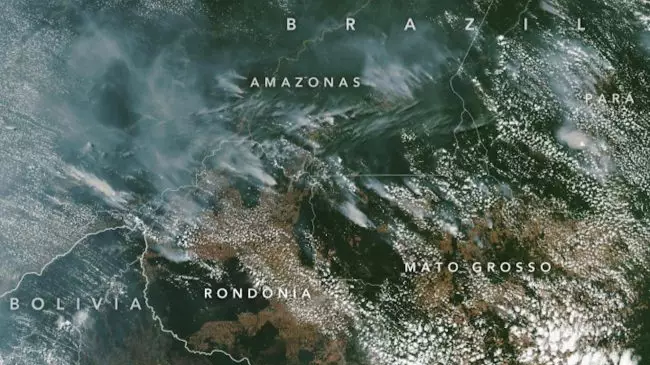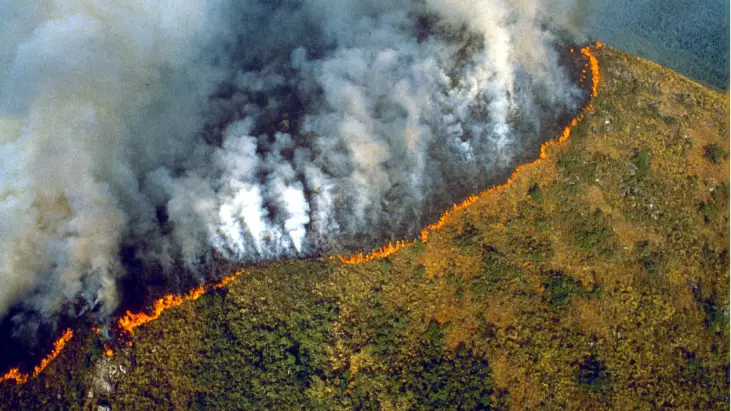
The world has been watching with despair as the Amazon rainforest burns with a record number of forest fires.
Brazil has recorded over 75,000 individual forest fires in 2019 so far, showing an 85 per cent increase when compared to the first eight months of 2018.
The impact on the Amazon has been catastrophic. In July, an area the size of Manhattan was obliterated every single day. And this destruction will undoubtedly have grave consequences for the entire planet.

Not only have animal populations been put under serious threat, the loss of forest areas could result in the release of significant quantities of stored carbon. This outcome would have devastating consequences for climate change.
Advert
As reported by The Independent, environmental experts have now warned the Amazon is fast reaching a 'tipping point', after which one third of the rainforest's ecosystem will be damaged beyond repair.
Speaking with The Independent, Professor Thomas Lovejoy of George Mason University explained it will soon get to the point where humans will be helpless to do anything to prevent further destruction.
Professor Lovejoy - who has been studying the Amazon since 1965 - told The Independent:
"When we were first worried about it, the amount of deforestation was small, But then these other things started to interact - the impact of deforestation and the effects of climate change became apparent, and the extent of the use of fire [for clearing land] became apparent.
Advert
The reason we believe the tipping point is so close is because we're seeing historic droughts in 2005, 2010, and 2016. And satellite images in the north central Amazon also show forests remote from everything are beginning to convert into grassland. That's yet another symptom.
These are not little droughts - boats cannot get up some of the river's tributaries, because they're so dry."
https://twitter.com/kuminaidoo/status/116521843779...
https://twitter.com/matthaig1/status/1164798949741...
Advert
The Amazon rainforest is vitally important to the regulation of global warming, absorbing millions of tonnes worth of carbon emissions each year.
Once trees are chopped down or burned, stored carbon is released into the atmosphere, reducing the rainforest's planet-preserving abilities to absorb carbon emissions.s reported by BBC News, the fires have released the equivalent of 228 mega tonnes in 2019 so far, the highest amount measured since 2010.
On top of this, the fires are emitting carbon monoxide, a gas produced when wood burns in an area without enough oxygen. Carbon monoxide, known to be toxic in large quantities, is currently being carried beyond the coastlines of South America.
Featured Image Credit: The Independent